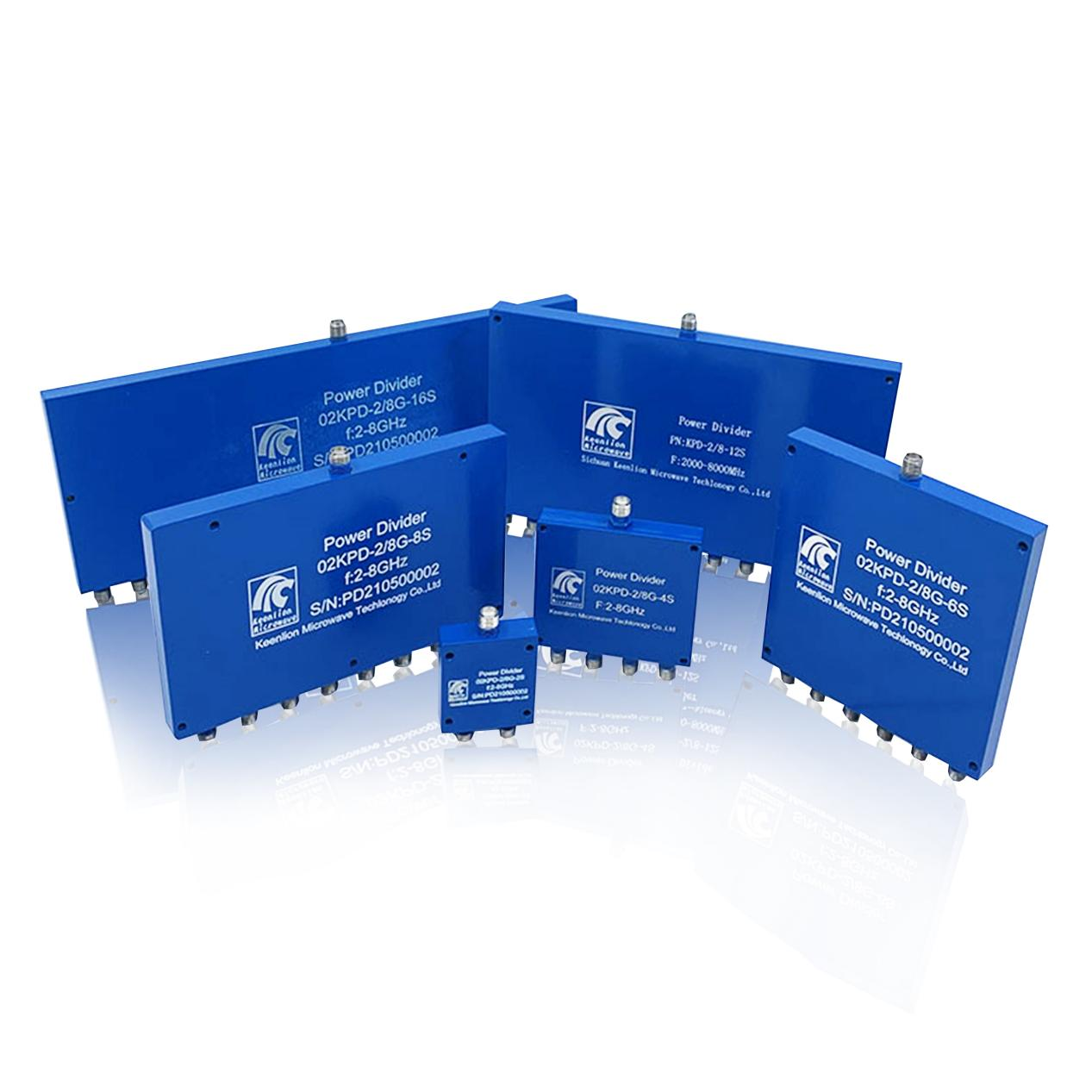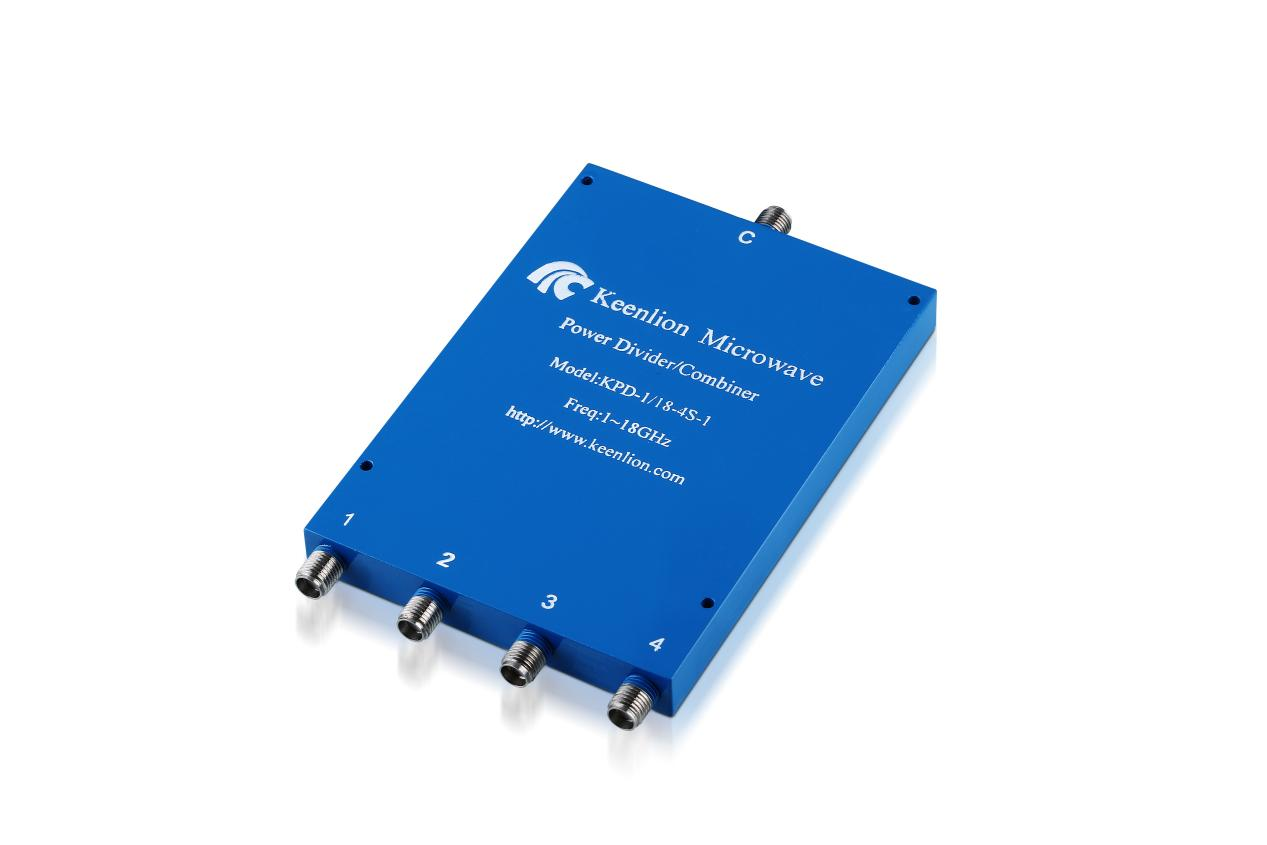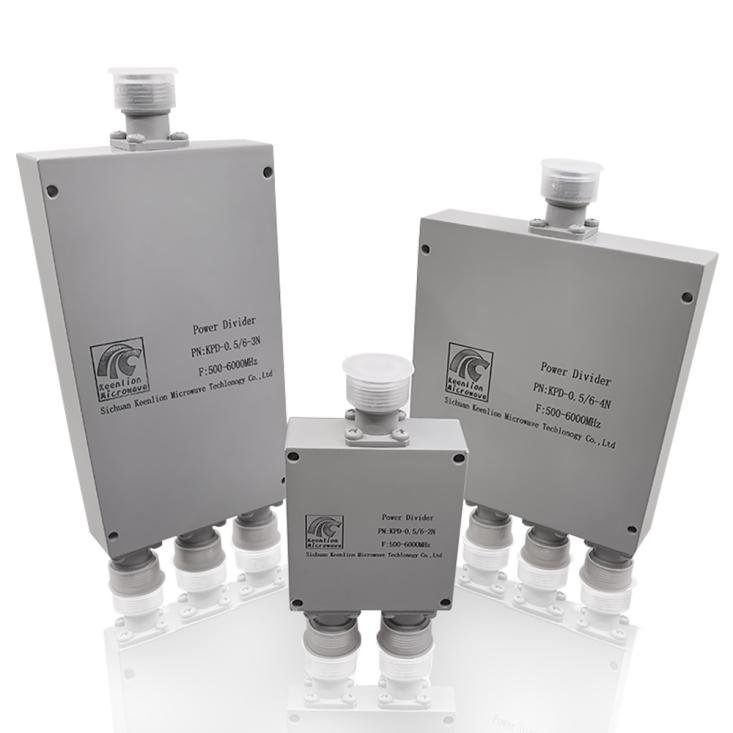A power divider divides an incoming signal into two (or more) output signals. In the ideal case, a power divider can be considered loss-less, but in practice there is always some power dissipation. Because it is a reciprocal network, a power combiner can also be used as a power combiner, where two (or more) ports are used to combine input signals into a single output. Theoretically, a power divider and a power combiner can be the exact same component, but in practice there may be different requirements for combiners and dividers, such as power handling, phase matching, port match and isolation.
Power dividers and combiners are often referred to as splitters. While this is technically correct, engineers typically reserve the word “splitter” to mean an inexpensive resistive structure that splits power over very wide bandwidth, but has considerable loss and limited power handling.
The term “divider” is most often used when the incoming signal will be split evenly across all outputs. For example, if there are two output ports, each would get slightly less than half of the input signal, ideally -3 dB compared to the input signal. If there are four output ports, each port would get about one-quarter of the signal, or -6 dB compared to the input signal.
Isolation
When choosing which type of divider or combiner to use, it’s important to consider isolation. High isolation means that incident signals (in a combiner) don’t interfere with each other, and any energy that isn’t sent to the output is dissipated rather than sent to an output port. Different types of dividers handle this in different ways. For example, in a Wilkinson divider, the resistor has 2Z0 value and is strapped across the outputs. In a quadrature coupler, a fourth port has a termination. The termination dissipates no energy unless something bad happens, like one amp fails or the amplifiers have different phases.
Types of Dividers
There are many types and subtypes of power dividers or combiners. A few of the more common ones include:
A Wilkinson divider splits an input signal into two equal phase output signals, or combines two equal-phase signals into one in the opposite direction. A Wilkinson divider relies on quarter-wave transformers to match the split port. A resistor is placed across the outputs, where it does no harm to the input signal at Port 1. This greatly improves isolation and allows all ports to be impedance matched. This type of divider is often used in multi-channel radio frequency systems because it can provide a high degree of isolation between the output ports. By cascading more quarter wave sections, Wilkinson’s can easily handle 9:1 bandwidths of electronic warfare systems.
As the name implies, an RF/microwave power divider will split an input signal into two equal and identical (i.e. in-phase) signals. It can also be used as a power combiner, where the common port is the output and the two equal power ports are used as the inputs. Important specifications when used as a power divider include the insertion loss, amplitude and phase balance between the arms, and return losses. For power combining of uncorrelated signals, the most important specification is the isolation, which is the insertion loss from one equal power port to the other.
Power Dividers Features
• Power dividers can be used as combiners or splitters
• Wilkinson and High isolation power dividers offer high isolation, blocking signal cross-talk between output ports
• Low insertion and return loss
• Wilkinson and resistive power dividers offer excellent (<0.5dB) amplitude and (<3°) phase balance
Si Chuan Keenlion Microwave a large selection of 2-way power dividers in narrowband and broadband configurations, covering frequencies from DC to 50 GHz. They are designed to handle from 10 to 30 watts input power in a 50-ohm transmission system. Microstrip or stripline designs are utilized, and optimized for best performance.
Units come standard with SMA or N female connectors, or 2.92mm, 2.40mm, and 1.85mm connectors for high frequency components.
We can also customize the power divider according to your requirements. You can enter the customization page to provide the specifications you need.
Post time: Aug-09-2022







